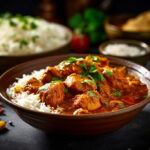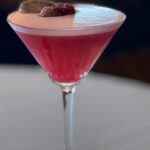Do you often find that the wine in a restaurant tastes nicer than the one you purchase from a bottleshop?
When dining in a restaurant, a sommelier can quickly identify the perfect wine for you based on your taste preferences and your meal.
Unfortunately, if you do not know much about wine yourself, browsing rows and rows of shelves in a bottleshop may leave you getting more confused. If you are unsure on how to select a good wine for the occasion, reading the product description – flavour notes, the origin of grapes, characteristics can often just make things more complicating.
The good news is, with a little basic information about wine on hand, you can at least have a good headstart on which wines are better suited for your palette and which wines to stay away from.
Everyone's taste is different, which makes choosing a good wine very subjective. Ranging from delicate, sweet, bold, tart to spicy flavours, there is always a group of people loyal to each flavour.
Once you have identified the fundamental characteristics that define the flavour of each category of wine, you will find picking the right bottle is no longer a guessing game.
-
Sweetness –This is the most common description of the wine. You have probably come across "sweet', "semi-sweet" or "dry". Although you can still taste the fruit in a dry wine, you won't taste the sweetness at all as all of the grape sugar has been converted to alcohol during the fermentation process.
-
Acidity – Acidity makes you taste tartness. The higher the acid, the more tart it is. When someone says that a glass of wine is crisp or fresh, it means that it has a well-balanced acidity that makes the wine refreshing and your mouth salivating for a sip after a sip.
-
Tannin – Tannin adds bitterness and astringency. It comes from the aging process in wooden barrels or fermentation on skins. It usually kicks in on the middle of your tongue and the front part of your mouth and dries out your mouth. It is most commonly found in red wine which gives it a distinctively dry and bitter finish relative to its white or rose counterpart.
-
Body – this is one of the most challenging characteristics to be identified. Wine can be categorised into a light body, medium body or full body. Body refers to the way a wine feels inside the mouth.
Generally, wines under 12.5% alcohol are light-bodied. White wines usually fall into this category. Wines between 12.5% and 13.5% are medium-bodied. Rose, French Burgundy, Pinot Grigio are all medium-bodied. Lastly, any wine above 13.5% alcohol is considered full-bodied.
Good examples are Merlot, Cabernet and even Chardonnay. Another factor that could affect the wine's body is the origin of the grapes. Grapes grown in warmer regions tend to produce fuller body than cooler ones.
Apart from the characteristics of wine, there are several other factors such as price, occasion and labels that you should consider when finding the wine that fits your palette. Below are some tips to help you find a bottle that satisfies your taste preferences.
1. For beginners, start with light-bodied or medium-bodied wine
That means, begin with a white or rose. Most people enjoy a sweet or semi-sweet wine initially, and as their taste preferences mature over time, they tend to shift towards dry reds or wine with bold flavours gradually. Starting off with a full-bodied or high tannin wine may be off-putting due to the sharp bitterness.
2. Draw inference from other food
Even though wine flavours are incomparable to other types of food, you are able to identify or draw an inference as to what kind of wine you like based on drinks like coffee or fruit juice. Do you prefer the bitter black coffee or something lighter such as a latte? Black coffee lovers are more likely to be drawn to an Old World wine from where winemaking was first founded, such as France or Italy. In contrast, those who prefer lattes will most likely find themselves enjoy New World wine from the US and Australia.
3. What's the occasion?
Are you going to enjoy the wine yourself or share it with your friends and family? What meal are you going to pair the wine with? For crowd-pleasers, it's always safe to go with a bottle of white and a bottle of red to cover the palette of everyone.
There are a few rules when it comes to food-wine pairing. The general rule of thumb is that white wine complements the flavour of white meat such as chicken and fish whereas red wines for beef and lamb. Fatty foods team up better with bitter or highly acidic wines as it cuts through the fat in the succulent pork belly or rich cheesecake. Remember, a good wine pairing will give you a more robust burst of flavour during mealtimes.
4. Don't be fooled by the price
Just because the wine is on sale does not mean that it is of inferior quality or "expiring soon". It could simply mean that it is not in season or less popular amongst the locals. In fact, you should take this opportunity to get a good deal and explore a wider variety of wine.
5. Don't worry too much about the age of the wine
It is a misconception that all older wines taste better. Even though aging plays a more significant role in red wines than white wines, wine is not meant to be aged in a bottle. It should generally be consumed within a few years of purchase.
Now that you are more familiar with the fundamentals of wine, don't feel shy anymore when entering a liquor store. If you happen to visit Mount Isa, the Super Cellars bottle shop located right next door to RedEarth Boutique Hotel is worth visiting. Not only it has a range of over 300 types of wine, but their staff is also equipped with extensive knowledge on helping you to choose a good wine.





